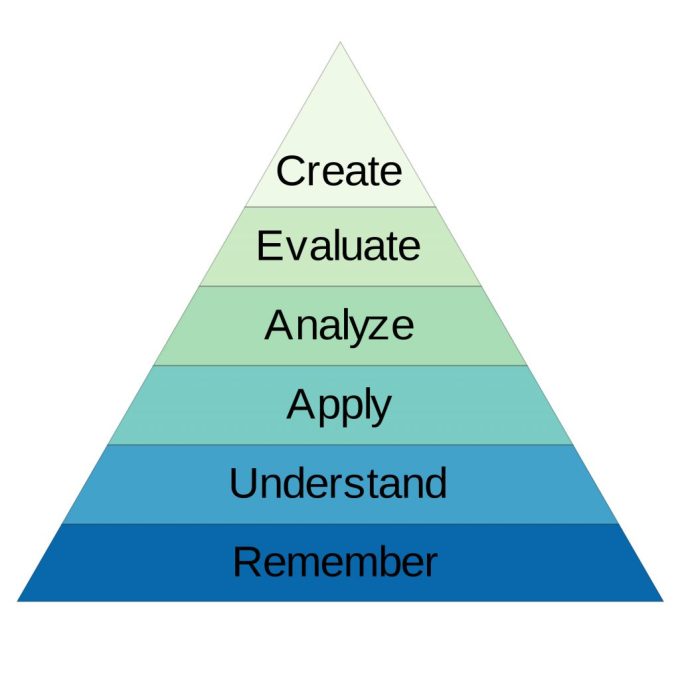Bloom’s Taxonomy
Applying Bloom's Taxonomy

Remember
Recall facts and basic concepts
This is the foundation for everything else:
- the terminology to discuss your subject,
- factual data and information (open to interpretation)
- origins of managerial thinking,
- theories and research related to your subject
You need to have this in place to progress to the further stages, but this alone will not get you the higher marks
Understand
Explain ideas or concepts
- Translation: making sense, word for word, of writing, ideas, symbols, research data and expressions
- Interpretation: re-ordering, or a new view on writing, ideas, symbols and expressions. Research findings and conclusions
- Extrapolation: inferring something further from that contained in writing, ideas, symbols and expressions. Taking research findings and predicting what this might mean.
Apply
Use information in new situations
- Using what a theorist has said
- Applying a particular theory, e.g. leadership, to a given situation
- Hypothetical or actual real-world examples
- Internalising the concepts of the theory
Analyse
Draw connections among ideas
- Analysing your research findings, making sense of the data
- Breaking down and examining in detail
- How something interrelates to something else
Evaluate
Justify a stand or decision
- Giving a judgment or value to something
- Comparing your findings against accepted external theories or standards (e.g. how a company rates in quality terms against a standard)
- Comparing against internal evidence (e.g. percentage in sales figures against previous years)
Create
Produce new or original work
- Creating a generalisation, trend or rule from your findings
- Creating a business plan for a new venture